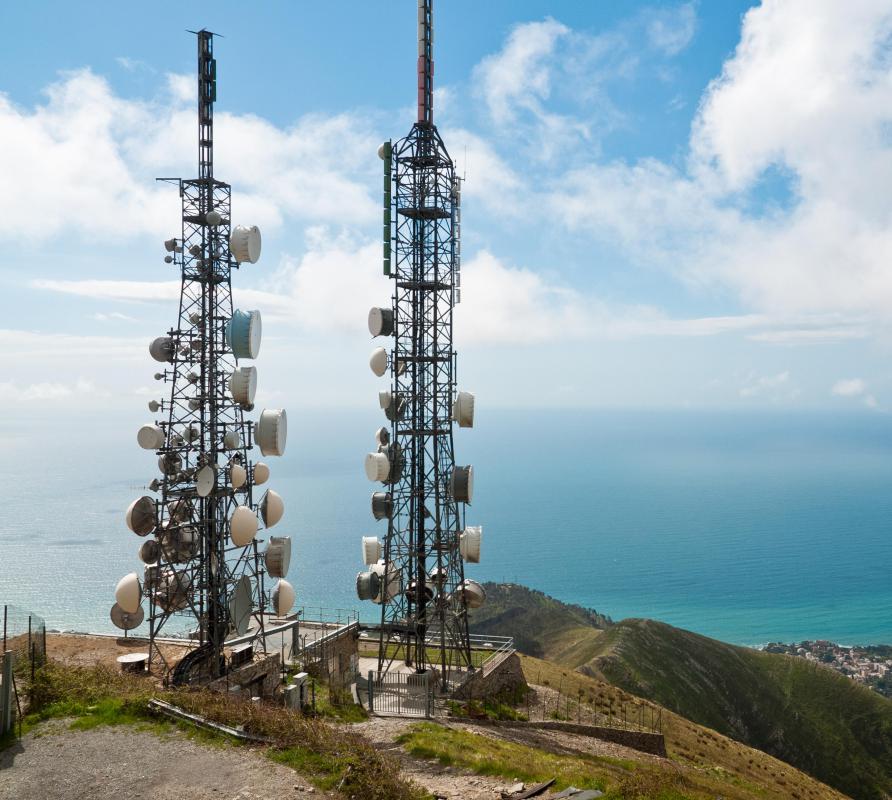At WiseGEEK, we're committed to delivering accurate, trustworthy information. Our expert-authored content is rigorously fact-checked and sourced from credible authorities. Discover how we uphold the highest standards in providing you with reliable knowledge.
How do I Choose the Best Roof Antenna?
Antennas — the devices for reception and transmission of radio, television, and phone reception — come in many styles and varieties and are found in many locations. Among the outdoor antennas, one can find antennas mounted on boats, cars, and trucks, towers, poles, balconies, walls, and roofs. Choosing the best roof antenna means maximizing the reception an transmission quality for the particular purpose the antenna is created for.
Although vehicle antennas are often mounted on a roof — in RVs and trucks, for example — a reference to a roof antenna most often refers to an antenna mounted on the roof of a building. Therefore, the starting point for choosing a roof antenna is identifying whether it’s for a vehicle or a building. If you are planning to mount a roof antenna on a vehicle, it’s important to consider the territory the vehicle will be traversing: low clearances suggest that a quick disconnect feature be included; busy city traffic suggests that a telescoping antenna may be a good idea.

If, however, you are aiming to place a roof antenna on a building, there are other considerations, including safety and legal requirements. The use of antennas on roofs can be restricted by zoning ordinances on account of appearance, capability, and safety to match regional land use. Historic preservation agreements may also limit the use of roof antennas, and condominium association covenants may also include guidelines. Though in general the rule for roof antennas is “the bigger and higher the better,” this may be mitigated by the need to stay within the law. In general, one should consider “line-of-sight” in choosing the mounting position; that is, ensuring that the antenna has a clear, uninterrupted path to the antenna to which its transmitting or from which it’s receiving transmission.

Of course it’s important to distinguish the purpose the purpose for a roof antenna. There are different antennas for CB (Citizen’s Band radio) base stations, satellite radio, HDTV, AM and FM radio, etc. There are also different designs of antennas, including directional and omnidirectional antennas, dipole, Yagi — a.k.a. Uda-Yagi or Yagi-Uda — and dish antennas, etc. For roof antennas intended for television reception, there are antenna maps on the Internet in which one can enter one’s location, the antenna height, and impeding structures between the location and the television broadcast channels, and receive advice about antenna type and setup.
AS FEATURED ON:
AS FEATURED ON:












Discussion Comments
@Feryll - People who don't want to pay for cable or satellite TV can still use these antennas to get TV reception. However, I don't think you could get more than 20 bucks for it and even then you need to find the right person. There isn't a large market for old TV roof antennas.
I grew the up with cable TV and satellite dishes so I don't think I had seen a TV antenna on a roof until we bought our new house. Actually, the house is very old and the ladies who lived there before us had a large antenna on the roof. The thing is attached in so many places and there are so many wires that I have been putting off taking it down.
Are these types of antennas worth anything today, or should I just throw it away? It appears to be in good condition.
The roof mounted antenna for TV sets is almost a thing of the past. At least, I hope they are about to fade away. Growing up, we were fortunate because we actually had an antenna on the roof that had a motor on it. This meant we could simply turn a little knob on a control box that sat on the TV set.
Little round stickers with numbers were placed on the face of the box so we would know which way the antenna needed to be pointed to get the best reception for each channel.
Some of my friends didn't have the motorized antennas and they would be forced to go outside and turn the antennas with their hands to get them pointed in the right directions. On the positive side, I guess this discouraged a lot of channel surfing.
Post your comments